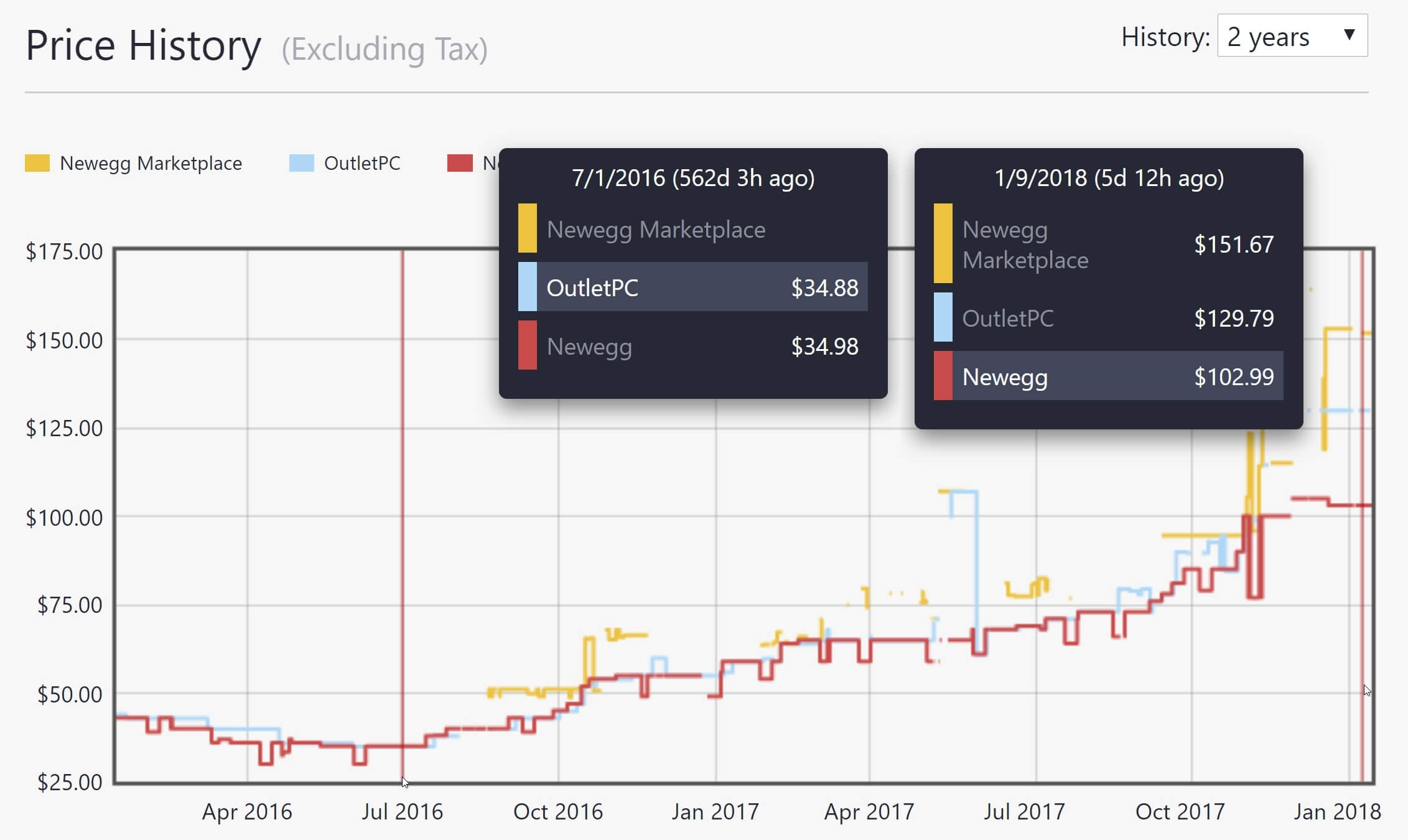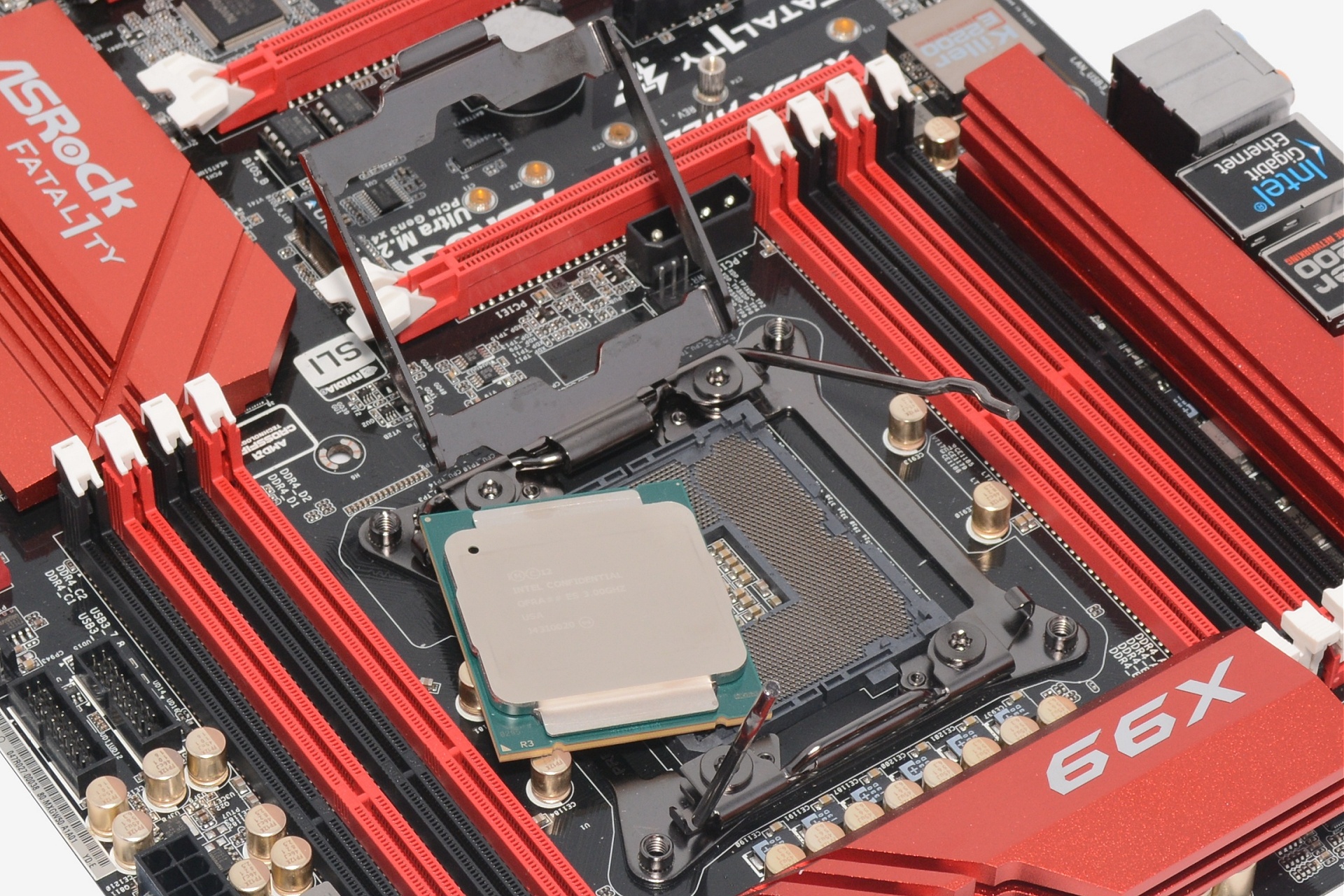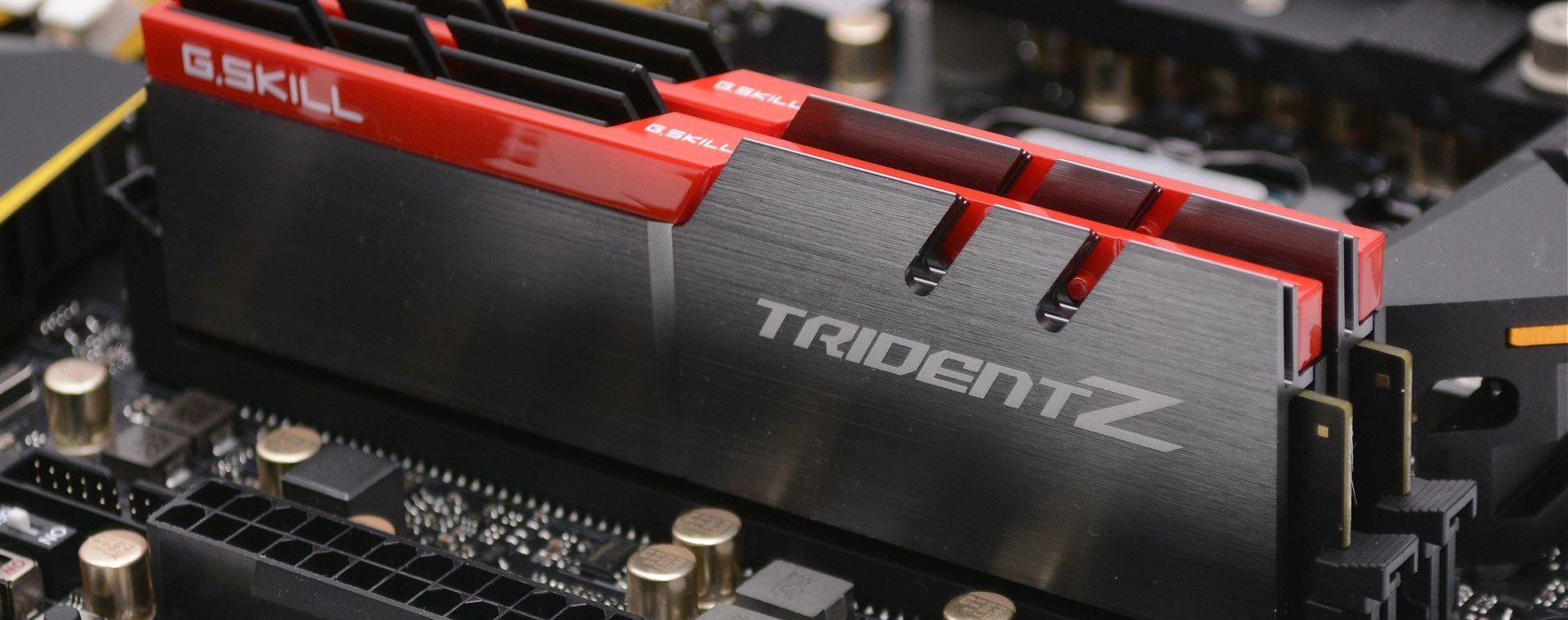The Corruption (1983)past twelve months turned out to be some of the most exciting times we can remember for building a new computer. Last March saw the launch of Ryzen ending half a decade of AMD being 'bulldozed' by the competition. From that point forward it was busy for PC hardware, including the release of new graphics cards and Intel having a second go at things with Coffee Lake after an underwhelming Kaby Lake launch. However, for as much as there was to be excited about regarding computer hardware in 2017, there was plenty to be upset about as well.
Unfortunately, some of these problems have gotten worse and will probably continue to worsen throughout 2018, which is going to make it increasingly difficult to build a PC. Part one of this series will be dedicated discuss DDR4 memory pricing and why it's so high.
RAM pricing is currently a big issue plaguing those wanting to build a new computer or even update an old one. From July 2016 to July 2017, the market saw a 111% increase for the average selling price of DDR4 memory, and it has continued to increase since then.

An 8GB DDR4-2400 memory kit went for around $35 in 2016. A year later you could expect to pay a little over $70 for the same product. Today you're looking at an asking price of at least $90, or 170% more than what we were paying roughly 18 months ago.
But why is this? First and foremost, it's an issue of supply and demand. And while it's difficult to predict exactly when supply will improve, most reports suggest this won't happen until late 2018 when manufacturing of 64-layer and 96-layer 3D NAND flash reaches maturity. Until then, demand will continue to heavily outweight supply.
So, okay, it's a supply issue – but why? What's the main driver behind either supply decreasing or demand increasing? I believe we've been faced with a sort of double whammy.
The major DRAM suppliers shifted focus away from DDR4 production due to tight margins, investing elsewhere, while growth in the traditional desktop sector over previous years was slow and nobody wanted to pay a premium for DDR4 products, resulting in a loss of interest from manufacturers who couldn't meet their planned targets and returns.

With limited demand in late 2014 with Intel's Haswell-E and Haswell-EP range which continued in 2015 with Skylake and then again 2016 with Broadwell-E, the limited supply wasn't an issue. However, in 2017 we saw a rapid shift in market demand toward desktop computing, not just Intel but now also AMD were shipping processors supporting DDR4 memory.
Perhaps an even bigger factor, the smartphone industry has increased demand of not just DRAM but NAND as well. It's worth highlighting that it's a different type of DDR4 memory which is produced for the mobile market (Low Powered DDR4 or LP DDR4), and manufacturers such as Samsung make more profit selling LPDDR4 memory in premium smartphones.
With demand outweighing supply, prices increased and DDR4 margins were no longer tight. By mid-2017, pricing of memory modules soared significantly and unfortunately it doesn't look like manufacturers will be ramping up production any time soon.
According to market research firm DRAMeXchange, the three major DDR4 suppliers (Samsung, SK Hynix and Micron) slowed down their capacity expansions and technology migrations to maintain prices in 2018 at the same levels seen in the second half of last year, which is presumably related to their interest in sustaining strong profit margins.
The construction of new fabs is underway to help the strained supply but they won't be ready for mass production until 2019 at the earliest. It's predicted by Gartner that DDR4 pricing will crash in 2019 and history would suggest this is likely to happen as that's the cycle we go through every few years with memory pricing.
China has the potential to change things here with its aggressive approach to the semiconductor market, which could cause pricing to become even more unpredictable. Chinese memory could flood markets worldwide causing pricing to plummet. Right now there is a large number of Chinese fabs being built and it is expected that the country will take second place for investment in semiconductors this year as it equips the many new fabs that began construction in 2016 and 2017.

It's also been reported that China's National Development and Reform Commission is investigating the possibility of DRAM price-fixing between the major industry players, and this has of course been sparked by the price surge we've been talking about. If found guilty, it's hard to predict what the ramifications would or could be, so we'll have to see how that story plays out. It would appear as though they do have quite a bit of power here, as SK Hynix and Samsung both have a number of facilities in China.
So if you have a choice: hold off on building your new PC until later in 2018 (or longer) or simply accept the hit on memory pricing. PC gamers will ideally want 16GB these days and those kits cost at least $170, with premium memory priced closer to $200. Granted, the same kit would have costed around $75 in the good old days, but try not to dwell on that.
Inflated DDR4 memory pricing is only one of the problems you can expect to face when looking to upgrade or build a PC in 2018, and in the next part of this series we're going to discuss what's going on with GPU pricing and what we can expect later this year.
2017 was an exciting year for PC hardware but it wasn't all roses. The warning signs we saw are painting more difficult in 2018. In this 3-part series we discuss why building a new gaming PC is not a great idea at the moment, or at the very least, it's going to come at great expense.
 Best soundbar deal: Save $300 on the Sonos Arc
Best soundbar deal: Save $300 on the Sonos Arc
 Shaun White's freakish Olympic win was a truly emotional experience
Shaun White's freakish Olympic win was a truly emotional experience
 Roommates prank friend by turning their bedroom into a bad museum from the future
Roommates prank friend by turning their bedroom into a bad museum from the future
 Netflix's 'Nightbooks' is a dark fairy tale with jump
Netflix's 'Nightbooks' is a dark fairy tale with jump
 Student discovers snake that's slithered into her Gryffindor backpack
Student discovers snake that's slithered into her Gryffindor backpack
 Snapchat has a hidden Valentine's Day Easter egg
Snapchat has a hidden Valentine's Day Easter egg
 The Norwegian curling team wore red and pink pants with hearts for Valentine's Day
The Norwegian curling team wore red and pink pants with hearts for Valentine's Day
 Best tablet deal: Get the Google Pixel Tablet for $120 off at Amazon
Best tablet deal: Get the Google Pixel Tablet for $120 off at Amazon
 Instagram boss likens social media to cars, says people will die
Instagram boss likens social media to cars, says people will die
 'Severance' puts a spin on the Orpheus and Eurydice myth in its Season 2 finale
'Severance' puts a spin on the Orpheus and Eurydice myth in its Season 2 finale
 Mike Pence *may* have just bought his wife a Valentine's Day gift at CVS
Mike Pence *may* have just bought his wife a Valentine's Day gift at CVS
 Apple Store goes down ahead of iPhone 13 pre
Apple Store goes down ahead of iPhone 13 pre
 Thank you, Lupita Nyong'o, for making Michael B. Jordan do a bunch of push
Thank you, Lupita Nyong'o, for making Michael B. Jordan do a bunch of push
 Best Samsung Frame deal: Free Music Frame with Frame Pro art TV purchase
Best Samsung Frame deal: Free Music Frame with Frame Pro art TV purchase
 Everyone can go home now. The Obamas just won Valentine's Day.
Everyone can go home now. The Obamas just won Valentine's Day.
 Gabby Petito's disappearance shouldn't be an internet true crime thriller
Gabby Petito's disappearance shouldn't be an internet true crime thriller
 Everyone can go home now. The Obamas just won Valentine's Day.
Everyone can go home now. The Obamas just won Valentine's Day.
 Watch how an old Venus spacecraft tumbled before crashing to Earth
Watch how an old Venus spacecraft tumbled before crashing to Earth
 Razer launches gaming finger sleeves and they look absolutely ridiculous
Razer launches gaming finger sleeves and they look absolutely ridiculous
Xiaohongshu clarifies no immediate plans for going public · TechNodeSubsidiary of New Oriental saw stock price slide nearly 20% after livestream dispute · TechNodeWordle today: The answer and hints for May 13The iPhone is your karaoke mic in tvOS 26's Apple Music SingJD Logistics upgrades “nextAlibaba pumps $634 million into Lazada in heated competition · TechNodeBumble apologises for 'antiMatch report: Many more singles are using AI to date in 2025Douyin beta tests AIHow to connect AirPods on XboxJD Logistics upgrades “nextHundreds of pooping vultures occupy CBP radio tower in TexasCSK vs. RR 2024 livestream: Watch IPL for freeResearchers put 3D glasses on cuttlefish to study their eyesNIO gets $2.2 billion cash injection from Abu Dhabi government fund · TechNode2024 iPad Pro benchmarks crush every PC we've tested for past 6 months — except oneWordle today: The answer and hints for May 13How to block websites on iPhoneChina Literature to acquire Tencent Animation and Comics for $84 million · TechNodeUS chipmaker Qorvo sells assembly and test facilities in China to Luxshare · TechNode Microsoft Teams update on Android fixes bug that breaks 911 calls Parker Solar Probe mission: NASA spacecraft dives into sun's corona Instagram is working on bringing back the chronological timeline 7 year old who wants to watch dog videos cleverly made her own cardboard computer Oppo teases its first Twitter says Donald Trump doesn't understand 'free speech' Stephen Colbert, Mark Hamill, and other celebs tweet old headshots Amazon's 'Encounter' review: A blend of alien thriller and road movie A comprehensive timeline of Kanye’s latest nonsense behavior Trump faces defamation charge from Stormy Daniels over "con job" tweet The bizarre story of an 'iCarly' fan account that's hassling celebrities on Twitter Kangaroos are injuring tourists because they're being fed human food NRA's gun ban raises ire of Parkland shooting survivors Meta's VRChat clone, Horizon Worlds, launches for all adult users on Quest 2 The 21 best Netflix TV shows and movies of 2021 LG's Objet TV can hide itself with a fabric cover Uhh, people keep searching for 'Cardi B' on Pornhub Seattle moves to toss old marijuana convictions Kanye West's 'Ye Vs. The People' has everyone losing their minds UNICEF turns to cryptocurrency mining for fundraising
2.395s , 10133.40625 kb
Copyright © 2025 Powered by 【Corruption (1983)】,Pursuit Information Network